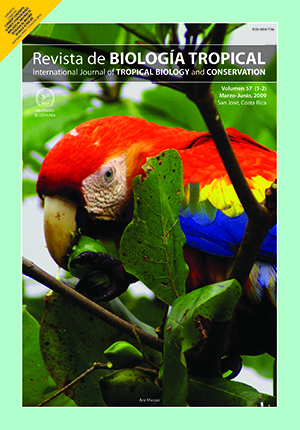Abstract
The effect of physical factors on fish species composition was studied during 12 months in Asa Lake, Nigeria. Fish and water samples were collected bimonthly (March 2003 to February 2004) in the morning. Fish samples were caught with gill nets set at the surface and bottom habitats. There were 11 fish families and 21 species. Osteoglossidae, Anabantidae, Channidae, Schilbedae and Cyprinidae were rare and occurred seasonally in fishermen catches, while Mormyridae, Cichlidae, Mochokidae, Characidae, Bagridae and Clariidae showed less variation and were more common. Characidae and Cichlidae were the most abundant (23.0 and 18.6% respectively) while Osteoglossidae, Channidae and Anabantidae were the least (1.7, 2.1 and 2.3% respectively). Clariidae and Mormyridae had the highest weight with 16.0% and 12.3% respectively, while Anabantidae had the lowest (3.4%). Surface water temperatures were generally higher than air temperatures during the afternoon, except from January to March when air temperatures were high (28.1 to 28.7 oC) due to low relative humidity (39 to 70%). In the morning, surface water temperatures (25.5 to 26.3 oC) became higher than air temperatures (25.2 to 26.0 oC) from May to December, when relative humidity values were also high (50 to 88%). The dif- ferences between surface and bottom water temperatures was generally higher (0.7 to 3.1 oC; P < 0.05) in the afternoon (0.2 to 0.8 oC) due to sunlight. Temperature differences in the surface and bottom waters were usually higher during the dry season (P < 0.05), for similar reasons. Captures were higher in the dry season when the fish concentrated in the warmer, steadier and scarcer water. Minimal and maximal temperatures were different for surface and bottom waters (P < 0.05). However, there were no marked variations in temperature patterns or species distribution##plugins.facebook.comentarios##

This work is licensed under a Creative Commons Attribution 4.0 International License.
Copyright (c) 2009 Revista de Biología Tropical
Downloads
Download data is not yet available.






